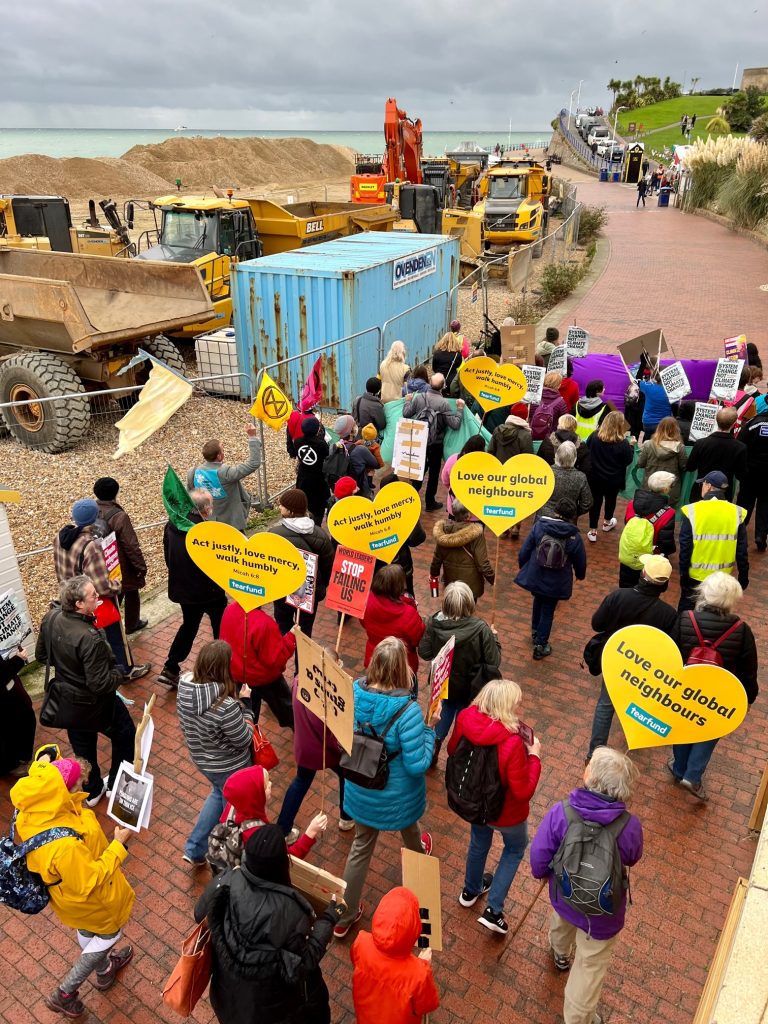Eastbourne is a coastal community on the front line of COP26’s big issue – climate change. Our town is facing rising seas and stronger storm surges of a rapidly warming world. If carbon emissions keep rising, we will confront an existential threat of flooding from the sea. Eastbourne’s survival as a viable local economy after COP26 depend upon transitioning as fast as possible to a zero carbon society that can adapt to the inevitable and ever more severe impacts of climate change. The moment could not be more urgent. We must transform Eastbourne into a innovative town that will create a new example.

After COP26: What must change if Eastbourne is to adapt to climate change
But what exactly does COP26 style climate leadership mean in Eastbourne?Carbon emissions from aviation and road transport are too high and rising too fast. Effective climate leadership is about stopping plans to expand Gatwick airport. It means averting the building of a big new A27 motorway between Lewes & Polegate. Local politicians must lobby for a much improved local bus service that has much cheaper fares. Communities must demand more regular bus services and using dedicated bus lanes throughout town. Our towns must give greater priority to better facilities and access for pedestrians and cyclists.
But most of all, it means ending our obsession with economic growth and refocussing on increasing the quality of life for both people and the planet. As COP26 roundly failed to clarify, growth at any cost is not sustainable and only makes our quality of life worse. Growth at any cost is literally costing the Earth. It’s even costing our health, as our town is literally choking on the poisonous fumes of air pollution, most of it coming from diesel traffic. In Eastbourne, local particulate air pollution is now more than twice the annual maximum limit deemed acceptable by the World Health Organisation.

How Eastbourne’s local communities are taking action against climate change
Many local community groups are outdoing COP26 itself, showing great climate leadership. Volunteers are starting tree planting schemes, setting up community food growing schemes and campaigning to end single-use plastics. Others are developing local community energy projects such as solar farms in Lewes District and in the Cuckmere valley. Projects like these not only make a difference but also help to create a more resilient and sustainable local economy that can help the area not only survive, but thrive, in the face of climate change. They also demonstrate to our political leaders what is possible now and in the future.
Furthermore, all local government policies and projects should contribute meaningfully to delivering a carbon neutral town by 2030. And by all, I mean all. After COP26, every single policy and project must have climate and nature care at its core. So, for example, ‘Levelling Up’ must include levelling up those people in the eastern part of the town most vulnerable to flooding from the sea and most unable to afford the resilience measures needed to adapt to climate change.
Levelling up means nothing without meaningful climate justice for the local people most vulnerable to climate change. And levelling up means nothing if it does not contribute significantly to reducing the town’s carbon emissions, which are not falling fast enough anyway. Eastbourne’s emissions only fell 6.8% in 2019. Emissions have to fall by 12% every year between now and 2030 to meet the town’s fair share of the UK’s commitments under the 2015 UN Climate Accord reached in Paris.

Eastbourne Borough Council must do better – but there are still reasons to feel hopeful after COP26
Eastbourne Borough Council’s own emissions are not falling fast enough, regardless of how the council’s spin doctors massage the figures. The Eastbourne ECO Action Network appreciate that the council has big challenges to meet in reducing its own emissions. Indeed, we are working with them to help them meet those challenges. However, as COP26 showed, we need an open and honest debate about those challenges – and not greenwashing.
However, our town has some reasons to feel hopeful. Eastbourne Friends of the Earth is forming a partnership with Cuckmere Valley Transition to set up an annual Green Awards and Fund. This new project will not only recognise outstanding local climate projects, but also distribute grants to scale up their work. We hope to launch the Awards and its associated Fund sometime next year.
The great irony is that all the actions necessary to safeguard our climate future are also actions that create a cleaner, safer and healthier environment for us all. The many co-benefits of climate action are huge. What’s not to like?
Andrew Durling
Executive Director, Eastbourne ECO Action Network CIC
